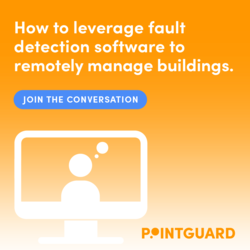CRE Portfolio Management Amidst COVID-19: Organizational Agility and Decision-Making at the Speed of Change

Commercial Real Estate executives and operators all face the same challenge: How to manage liquid assets with high fixed costs, in the midst of rapid change, and now, COVID-19.
Even pre-COVID-19, the CRE Industry experienced major shifts in the use and value of retail and office properties and supply chain logistics. But now, with the global pandemic, the calculus to determine the true cost of doing business has been radically altered by risk profiles that seem to change daily and by the market. More than ever before, executives require real-time, data-driven insights that go beyond the financial analytics of property and portfolio performance; and, must factor in the cost to ensure the health and safety of their employees and economic impacts as they return to normalized business operations.
The stakes are high, and the pace has accelerated. But as seen time and again, crisis can bring out the best of humanity and inspire unique creativity to problem-solve. So, as we look to the present, what is working at country, state, county and city levels; and into the future, post-COVID-19, what changes will persist? How will these changes influence CRE occupancy and values? Will we see the redesign of workplaces, family, business and geopolitical relationships, communication methods, work-cadence, manufacturing processes, logistics strategies, capitalization, public policies related to housing, etc.? Will we ever shake hands again?
This uncertainty and change has placed a premium on two things: Decision-making speed and Organizational agility.
Executives now not only seek real-time visibility on everything and from anywhere – they want the ability to forecast and predict change on both macro and local levels. This requires not only data of many types, but the ability to blend, sort, filter, analyze, and convert that data into actionable insights. To solve this problem, CRE owners like Blackstone along with other owner-operators, advisors and corporate occupants have uploaded over 12 billion SF of portfolio and transaction data into their private instances of NavigatorCRE, with many of their peers in the process to do the same.
As Lisa Picard, CEO of Blackstone, Equity Office said: “Navigator brings me daily, clear optics into my portfolio." Industries hit hard and fast by COVID-19 like foodservice, hospitality, retail and senior living are engaging NavigatorCRE to mitigate losses in the short run and assist in recovery in the long-run.
This is why NavigatorCRE has not only formed partnerships with world-class data providers like Moody’s and their full data network but integrates and interoperates with many other legacy data systems (CRM, property management tools, etc.) to allow companies to blend public and licensed third-party data with their own private data. It recognizes that the problem isn’t a lack of data; in fact, there is an abundance of it available. However, it is harbored in disparate systems, PDFs and loosely managed spreadsheets in a variety of formats. That problem is solved by Navigator's ability to streamline the process of converting all of that data into relevant insights.
For example, to help corporate and public sector leaders assess the risks to their business, asset values and employees concerning daily pandemic changes, the company joined forces with one of its premier data partners, StateBook International, to build Viral Insights, a free website that allows daily visibility into the COVID-19 impact on community health status, health service resources, economies, labor, employment and businesses in cities, counties and states across the U.S. Also, the software has the capacity to deliver a private direct license instance so companies can track their asset portfolios and employment rosters against the ever-changing landscape of economic and health data to assess risk, establish and execute effective strategies.
Commercial Real Estate executives need a data analytics and collaboration platform that delivers speed and agility to all of their global employees, clients, and partners.
This is the “Last-Mile of Data” that occurs after data from a vast array of sources is aggregated, validated, corrected, configured and integrated. This allows data to be converted to analytics and visual formats intended to deliver insights necessary for optimal executive decision-making and operational performance. What once took months is now possible in minutes. The value of moving from the norm of highly manual processes to highly automated processes can yield ROI in the millions in terms of cost savings and business performance.
NavigatorCRE holds the US patent on the ability to integrate structured and unstructured data and convert it into multiple business intelligence formats on a single operating platform for Commercial Real Estate.
Beyond the ROI of rapid decision-making, the platform enables disparate operational teams to draw from a single source of truth and execute in alignment. Executives and operators instantly access visibility into the granular detail related to a single property, submarket area or rolled up portfolio views located globally.
Executives should ensure that their chosen platform goes beyond aligning a company’s internal operational teams and is able to extend licenses to their vendors, service providers and limited partners to enable real-time visibility and reporting for the stakeholders. The result is what we’ve coined as “Return on SpeedTM” (ROS), measured by performance, market share, growth and profitability.
We believe organizations require a single operating platform that supports evolving corporate structures that are organic, decentralized, relational and open – as opposed to the traditional hierarchical, linear and closed organizational structures of the past. We exist to complete, not compete. NavigatorCRE is a platform that is agnostic to data type, data source, corporate identity, program systems, geography, property type, and persona requirements. It is a centralized repository where teams can voluntarily consolidate data, instantly convert it to relevant insights and share it with discretion and for specific purposes among other teams; but also, to share within networks that extend beyond the boundaries of their companies to achieve insights and agility never before possible.
And now, this type of open organic networking has become critical to the survival of companies long-term, because the conditions of accelerating change are here to stay. And, for those equipped to Navigate at the speed of change, the future is bright.
This Week’s Sponsor
NavigatorCRE integrates and aligns data, programs, and teams on a single patented, visually stunning platform so executives and operators can keep up with the speed of change and achieve their goals for performance and growth. Return on Speed (TM).
Read Next
 5/15/2025
5/15/2025
Tech, Talent and Transformation: 2025 Digie Finalists Announced For 27 years, Realcomm has presented the Digie Awards to acknowledge companies, real estate projects, technologies, and individuals that have advanced the commercial real estate industry through the strategic use of technology, automation, and innovation.
 5/15/2025
5/15/2025
Empowering Space Management with Data-Driven Visualization For effective CRE space management, it’s critical to centralize lease data, maximize rental square footage (RSF), improve energy efficiency and reconfigure spaces to meet changing needs.
 5/8/2025
5/8/2025
The AI-Powered Workplace Evolution: Redefining the Business Landscape In today's rapidly evolving business environment, the fusion of Artificial Intelligence (AI) and Workplace Management is revolutionizing the way organizations approach workspace optimization and operational efficiency.
 3/27/2025
3/27/2025
The Convergence of Edge Computing, Cloud, and AI in Building Automation and Smart Buildings In the built environment, we have seen the convergence of Operational Technology (OT) and Information Technology (IT), later expanding to include Workplace Technologies (WP).


%20(1)%20(1)%20(1).png)









